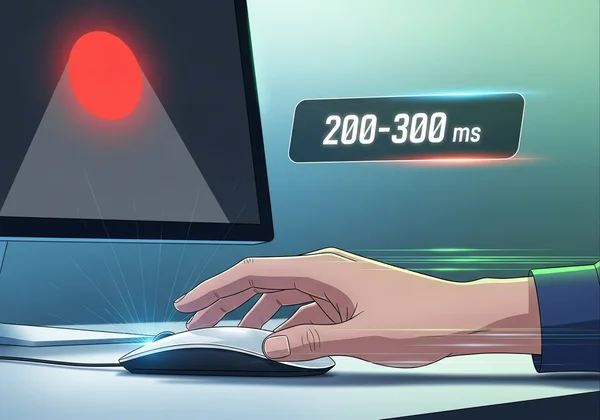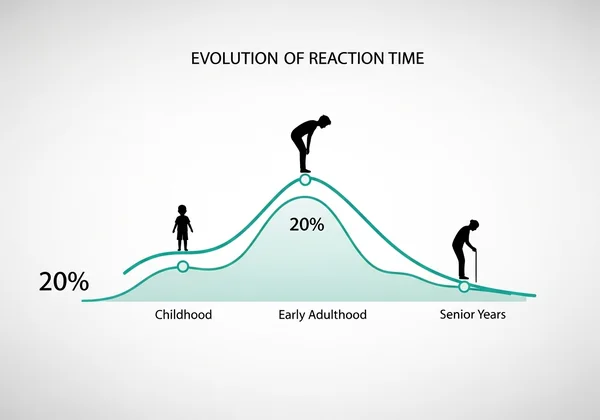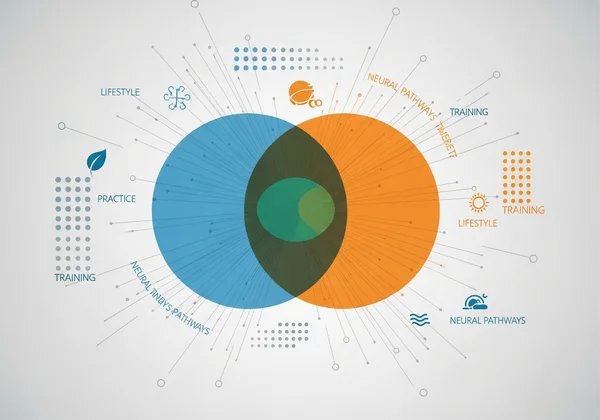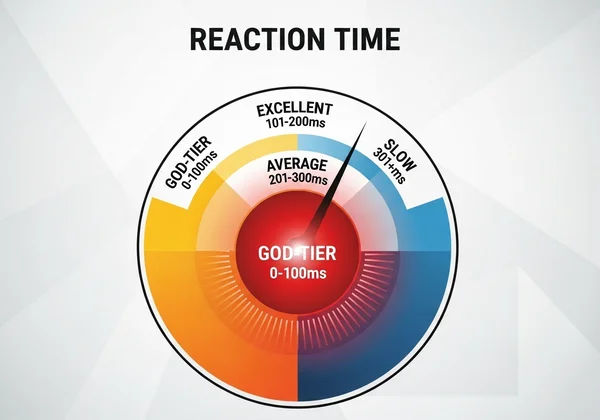Average Reaction Time by Age & Gender: Compare Your Speed!
Have you ever wondered how quickly you react to the world around you? That split-second decision to hit the brakes, catch a falling glass, or click a mouse in a crucial gaming moment is governed by your reaction time. It's a fundamental measure of your nervous system's processing speed. Understanding the average reaction time is not just for elite athletes or gamers; it's a fascinating window into our own cognitive health and performance. What is a good reaction time for your age?
As a psychology enthusiast, I'm captivated by how our minds process information. The journey from seeing a stimulus to making a physical response is a beautiful, high-speed dance of neurons. It reveals so much about our brain's efficiency. The best way to understand your own performance is to measure it. You can test your reflexes now with a simple, accurate online tool that provides immediate feedback on your mental quickness.
What's the Average Human Reaction Time?
Before diving into a sea of numbers, let's set a baseline. For a simple visual stimulus, the average human reaction time is typically in the range of 200 to 300 milliseconds (ms). Think about that—a quarter of a second to see something, process it, and react. This lightning-fast response is a true testament to the incredible, finely-tuned efficiency of our neural pathways.

Understanding Milliseconds: What Your Reaction Time Means
A millisecond is one-thousandth of a second. When you see a score like "215 ms," it means just over two-tenths of a second passed between the signal appearing and you clicking the mouse. To put it in perspective, a blink of an eye takes about 300-400 ms. So, a good reaction time is literally faster than the blink of an eye. This precision allows us to measure subtle changes in our cognitive performance over time.
Simple vs. Choice Reaction: Why Context Matters for Your Score
It's important to know what kind of test you're taking. The test on our site is a simple reaction time test—one stimulus, one response. This is a pure measure of your sensory and motor pathway speed. A choice reaction time test is more complex; it might involve clicking a specific key based on the color of the signal. These tests engage more cognitive processing and are naturally slower. For establishing a baseline of your raw processing speed, the simple test is the gold standard.
Reaction Time by Age: How Does Your Speed Evolve?
Our cognitive abilities, including reaction speed, are not static. They evolve throughout our lives, much like physical strength or flexibility. This journey is a natural part of human development, and tracking it can be incredibly insightful for anyone interested in their long-term brain health.

The Peak Years: Adolescence to Early Adulthood
Reaction times generally improve dramatically through childhood and adolescence, reaching their absolute peak in our early to mid-20s. During this phase, the nervous system is fully developed, and myelination—the process of insulating nerve fibers to speed up signals—is at its maximum. This is why young adults often excel in esports and fast-paced sports. Their brains are wired for a rapid motor response.
Maintaining Speed: Reaction Time in Middle Age
From our late 20s through our 50s, reaction time begins to slow, but the decline is very gradual. For most people, the change is barely perceptible in daily life. Lifestyle factors like regular exercise, a healthy diet, and getting enough sleep play a significant role in maintaining this cognitive function. This is the perfect time to start monitoring your performance and see what lifestyle changes make a positive impact. Want to establish your current baseline? Check your reaction time in just a few clicks.
Senior Reactions: Understanding Natural Changes & Performance
After the age of 60, the decline in reaction speed can become more noticeable. This is a normal part of aging, linked to changes in brain structure and chemistry. However, "slowing down" is not inevitable. Engaging in mentally stimulating activities, staying physically active, and practicing reaction-based tasks can help preserve neural pathways and maintain a sharp mental quickness well into your senior years.
Is There a Difference? Reaction Time by Gender Explained
This is a common question, and the data presents some interesting trends. When looking at large population averages, studies often show that males, on average, have a slightly faster reaction time than females. But this is where we, as curious minds, must look deeper than the surface-level numbers.

Decoding the Data: Male vs. Female Reaction Speed Trends
On average, the difference observed is often in the range of 20-30 milliseconds. While statistically significant across large groups, it's crucial to remember that this is just an average. The overlap between genders is enormous, meaning many females are significantly faster than many males. The individual variation is far more important than the average difference between groups.
Influencing Factors: Beyond Biology & Demographics
Why might this small average difference exist? Researchers suggest it's a complex mix of factors. Hormonal differences might play a minor role, but experience and practice are likely more significant contributors. For instance, historically, young males have been more likely to engage in activities that train fast reflexes, such as video games and certain sports. As these activities become more universal, the gap may narrow. The key takeaway is that your personal habits and training matter far more than your gender.
What is a Good Reaction Time: Benchmarking Your Speed by Age?
This is the ultimate question. After learning about the averages, you want to know: "How do I stack up?" A "good" score is relative to your goals and demographic profile. Are you a competitive gamer aiming for the top 1%, or a health-conscious individual tracking your cognitive wellness?

Benchmarking Your Reaction Time Score: Where Do You Stand?
The best way to find out is to take the reaction test and compare your score. Here’s a general guide to help you interpret your results from a simple click test:
- Under 150 ms (God-Tier): This is incredibly fast, often seen in professional esports athletes and fighter pilots. It's at the limit of human potential.
- 150 - 200 ms (Excellent): Exceptionally fast. This range is typical for competitive gamers and athletes who rely on quick reflexes.
- 200 - 240 ms (Above Average): A fantastic score that is quicker than the majority of the population.
- 240 - 280 ms (Average): This is a solid, healthy reaction time for most people.
- 280 - 350 ms (Below Average): A bit on the slower side, but this can often be improved with practice or lifestyle adjustments.
- Over 350 ms (Slow): If your scores are consistently in this range, it might be worth exploring factors like fatigue, distraction, or hardware lag.
Professional Edge: Gamer & Athlete Reaction Speed Targets
For those in competitive fields, the standards are much higher. A casual gamer might have an average reaction time of 250 ms, but a professional FPS or MOBA player aims to be consistently under 180 ms, and ideally closer to 150 ms. This fractional difference is what separates a good shot from a great one. Similarly, a boxer or F1 driver needs that elite-level sensory input and motor response to compete. You can use our tool as a reaction time trainer to push your limits.
Test, Track, & Boost Your Reaction Speed Today!
Understanding your reaction time is more than just a fun piece of trivia; it’s a valuable metric for cognitive performance and brain health. It reflects the core efficiency of your nervous system. We've seen how it peaks in your 20s, how it's influenced by lifestyle, and what the benchmarks are for average and elite performers.
The most important step is to move from theory to practice. Knowledge is powerful, but self-knowledge is transformative. The only way to truly know where you stand is to test yourself. So, why wait? Visit our homepage to take the free, instant reaction time test. See your score, compare it to the benchmarks, and start your journey of tracking and improving your mental quickness today!
Your Top Questions About Reaction Time Answered
What is considered a good reaction time for adults?
For adults, a reaction time between 200-280 ms on a simple visual test is generally considered good to average. Scores under 200 ms are excellent, reflecting highly efficient neural processing. Context is key, as factors like age, alertness, and even the device you use can influence your score.
What is the fastest human reaction time ever recorded?
While official world records are difficult to verify due to equipment differences, reaction times for simple visual stimuli have been recorded as low as 100-120 ms. These are extreme outliers, often achieved by individuals like professional drag racers or sprinters whose entire sport revolves around that initial burst of speed.
Is reaction time primarily genetic, or can it be significantly improved?
It's a combination of both. Genetics sets a certain baseline potential for your nervous system's efficiency. However, training and lifestyle have a massive impact. Through consistent practice with tools like a click speed test, improving sleep, staying hydrated, and engaging in sports, you can significantly improve your reaction time from your personal baseline.
What commonly causes slow reaction time, even in healthy individuals?
Several common factors can temporarily slow your reactions. Fatigue is the biggest culprit—a tired brain is a slow brain. Others include dehydration, lack of focus or distraction, poor nutrition, and consuming alcohol. Even your equipment can play a part; a slow monitor or mouse can add milliseconds of delay to your score.